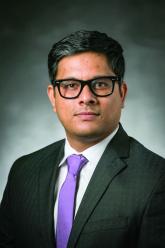Opinion

Wave, surge, or tsunami
- Author:
- Chi-Cheng Huang, MD, FACP, SFHM
- William C. Lippert, MD, MPH
- Bill Payne, MBA
- Manoj Pariyadath, MD
- Padageshwar Sunkara, MD, MMCi, FACP, FHM
Publish date: July 14, 2020
Predictive models for COVID-19 have strengths and weaknesses and none are perfect.
News

Doing things right vs. doing the right things
- Author:
- Padageshwar Sunkara, MD, MMCi, FACP, FHM
- William C. Lippert, MD, MPH
- Christopher Morris, MD
- Chi-Cheng Huang, MD, FACP, SFHM
Publish date: April 13, 2020
There has been inconsistent guidance in regard to the containment of COVID-19 within health care systems.
